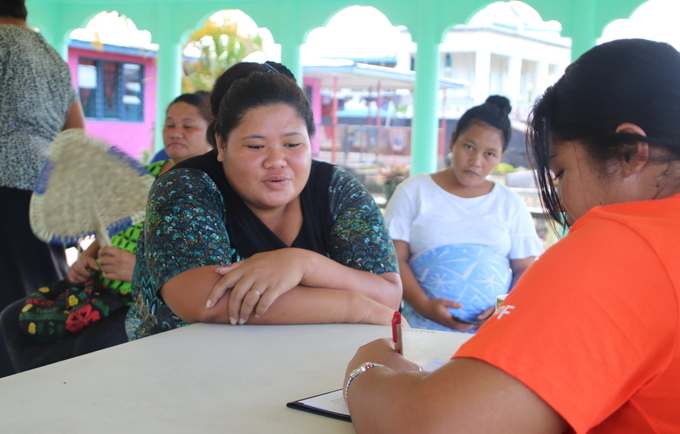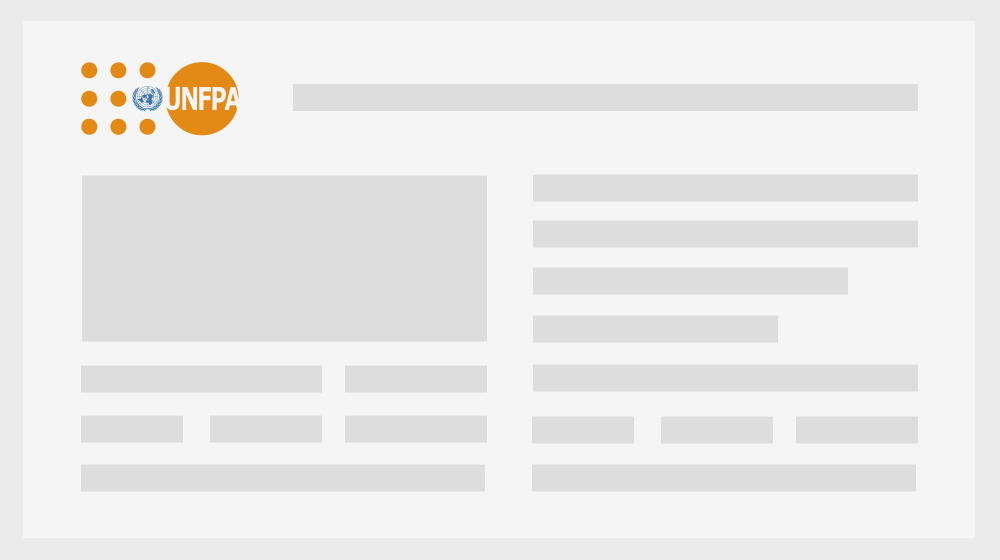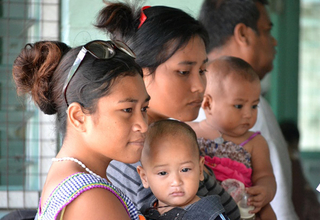What does a healthy and happy life look like?
For some people, it includes abundant, fresh food. For others, it features economic prosperity that will give them greater opportunities or security. For almost all, it involves love, in some form or other.
Love is one of the characteristics that connects all of humanity. And the ability to let that love translate into a lifetime of milestones – such as finding your soulmate and starting a family – is informed by the universal human right to decide whether, when, where and under what conditions one decides to have children.
The 26th of September marked World Contraception Day. It is a day of education, awareness and celebration, where we highlight available contraceptive methods and encourage every person – and especially young people – to make informed choices regarding their sexual and reproductive health.
The Sustainable Development Goals highlight the importance of universal access to sexual and reproductive health, including family planning and contraceptive choices, as a key driver for poverty reduction and sustainable development. However, across the world, only 76% of women now have their need for family planning satisfied by modern methods. In the Pacific, the reality is far worse: just one in four women have their need for family planning met, which is the lowest rate in the world.
Just as meeting the need for family planning can reduce poverty and facilitate sustainable development, failure to meet these targets undermines our collective efforts to raise the Pacific’s standing in terms of health and wellbeing. The issues, and the solutions, lie in understanding two important areas: adolescent fertility rates and sexually-transmitted infections.
A country or region measures adolescent fertility (also known as ‘adolescent pregnancy’ or ‘teenage pregnancy’) by calculating the number of births annually per 1,000 adolescents between the ages of 15 and 19. This is also referred to as the adolescent birth rate (ABR). Ideally, the adolescent birth rate would decrease a little more each year as understanding of family planning and contraceptive access improves among adolescents, but in the Pacific, the adolescent birth rate has actually been increasing over the last 10 years. Today, it stands at 35 births per 1,000 adolescents each year – significantly higher than neighbouring countries like Australia (12 per 1,000), New Zealand (16 per 1,000) or Malaysia (11.5 per 1,000).
Adolescent pregnancy is a serious issue, and one that most people agree must be reduced. Few will agree more fervently than girls themselves, and yet, in the Pacific, nine out of ten sexually active adolescent girls are unable to access the contraceptive services they need. The impact this has on the lives of daughters, sisters, friends and loved ones is serious. When a girl faces the prospect of becoming a mother while still a child herself, she is doing so in a body that is not physiologically developed enough for pregnancy and childbirth. Consequently, she faces a number of heightened pregnancy-related risks, including dying in childbirth, compared to if her experience of pregnancy and childbirth had been delayed until she’d reached adulthood. Furthermore, her baby is also at higher risk of adverse health outcomes including low birth weight and preterm delivery.
Beyond the potential for physical harm, the social stigma faced by pregnant adolescent girls can be long-lasting and severe. A pregnant girl is expected to face the judgment of her family, peers and community, but her pregnancy – or the way people react to her pregnancy – also inhibits her access to education and healthcare. A pregnant girl is much more likely to drop out of school, which dramatically reduces the professional and personal opportunities available in her future, and in the health system, she is likely to face increased risks due to reduced access to respectful prenatal, delivery and postpartum care.
Thankfully, the leadership of governments across the Pacific, in partnership with the United Nations Population Fund (UNFPA) and the government of Australia, is helping this reality to change through the regional programme, A Transformative Agenda for Women, Adolescents and Youth in the Pacific: Towards Zero Unmet Need for Family Planning, which focuses on achieving ‘the three zeros’: zero preventable maternal deaths, zero unmet need for family planning, and zero gender-based violence, including all harmful practices. Similarly, a United Nations Pacific Strategy partnership supported by the government of New Zealand has dedicated funding to ensure young people continue to access sexual reproductive health services, as well as comprehensive sexuality education, also referred to as Family Life Education, within the COVID-19 context in three Pacific countries.
It will be no easy feat to achieve the three zeroes, but Pacific governments have stepped up to the challenge. At the Nairobi Summit of the International Conference on Population and Development (ICPD) in 2019, seven Pacific countries – Cook Islands, Federated States of Micronesia, Kiribati, Solomon Islands, Vanuatu, Tonga and Samoa – made measurable and action-oriented commitments to improving the lives of women and girls. The positive impact of these commitments can already be identified in the community, just one year later.
Today, over half of women aged 15-49 years in Kiribati who are currently married or in a union have their family planning needs satisfied with modern contraceptive methods – a remarkable improvement from the 2009 level of 35.8%, and one that has been bolstered by the Nairobi Summit commitments. The Solomon Islands government’s commitment to strengthen the National Family Planning programme has led to an increasing trend in the utilisation of family planning services, including among young people. Compared to 2018, in 2019 there was a 31% increase in the total number of women currently using modern contraception, and a 34% increase among those under 20 years of age. The success of the programme is also highlighted by the increase in the number of new users of contraception by 21% during the same period, which shows that when access to and education about contraception is available, women will actively seek it.
The benefits of investing in contraceptive services and information extend beyond the purview of adolescent pregnancy – or pregnancy at all, for that matter. When people have access to, and are educated about, contraceptives, the spread of sexually transmitted infections is markedly reduced. This is vital for the health and wellbeing of people across the Pacific, where the prevalence of sexually transmitted infections among youth has been on the rise for the last 10 years.
This highlights the need for accessible, well-resourced and youth-friendly sexual and reproductive health services, as well as comprehensive sexuality education that will empower people of all ages to make informed choices regarding their own health and wellbeing. The evidence is consistent: these strategies are the most effective mechanisms to prevent unintended pregnancy, HIV and other sexually transmitted infections. We must redouble our efforts to change this trajectory.
In these unprecedented times, we must be resolute in our commitment to achieve the three zeros. COVID-19 is an unprecedented disruption to conventional ways of working, but the Pacific’s characteristic resilience in the face of natural disasters and climate change evidences how our region is well-positioned to adapt and overcome in the face of the unexpected. The COVID-19 pandemic has majorly disrupted hospital services globally, and fear of contracting COVID-19 has reduced service utilisation. Projections in Fiji, for example, suggest that if access to short-acting contraceptive methods is reduced by 20% due to COVID-19, this has the potential to lead to 14 additional maternal deaths and 10,449 additional unintended pregnancies. We must sustain uninterrupted distribution of contraceptives across the Pacific to ensure family planning needs are fulfilled by all who want them.
The Pacific’s decisive leadership on this issue has the power to plant seeds that will blossom for generations to come. It is already beginning to take place in the positioning of contraceptives and the increased training of health providers. It is reinforced through the development of timely and age-appropriate comprehensive sexuality education curricula which empower young people to make informed decisions about their own health and wellbeing. This education, coupled with greater access to family health services, will enable today’s adolescent girls to learn, work, and thrive, without the practical and social pressures that come with unintended pregnancy.
The result? Girls and boys alike will mature into adults, who, when they have the time, resources and inclination, can start their families at the right stage in life. And, at last, a new generation of babies is brought into the world… happy, healthy, and wanted.
UNFPA’s Pacific Sub-Regional Office supports women and girls in the Pacific to have access to family planning services and modern contraceptive methods through partnership with governments to procure and distribute contraceptives to the last mile and ensure every individual can choose, use and obtain the contraceptive methods they desire to ensure prevention of unintended pregnancies.



